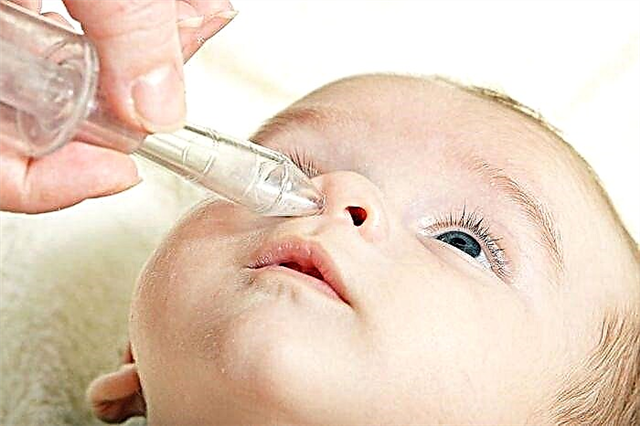
A symptom such as the appearance of blood in the stool can scare any mother. The reasons for its occurrence are different, including diseases that are dangerous to the health of babies. To know how to act upon finding poop with blood, parents need to know under what pathologies this happens and in what cases it is urgent to show the baby to the doctor.

What does bloody stool look like?
Bloody stools can look different in a child. Pure blood or blood clots may appear from your baby's rectum. The feces can be covered with blood or evenly mixed with it.
In some pathologies, a lot of mucus appears in the feces, and because of the blood, such a stool acquires a resemblance to currant or raspberry jelly. Bloody diarrhea also occurs, and with some types of bleeding, bloody stools become dark and sticky (like tar). Such feces are called melena.
Color of blood in feces
To identify the cause of bloody bowel movements, it is important to assess the color of the stool, since in the case of bleeding, the color of the blood will help to understand from which part of the digestive tract it began.
Bright red
If the blood in the stool is scarlet, it often confirms that its source is in the lower intestine. With such discharge, mom usually sees blood and poop separately (they do not mix with each other).
The most common causes of bright red blood in a baby's bowel movements are anal fissures and hemorrhoids. With a crack, the child will complain of pain in the anus during bowel movements, and there will be traces of blood on the toilet paper. This problem in children is usually caused by stool that is too hard or difficult to pass (constipation).
With hemorrhoids, blood can drip from the anus and enter the stool, and the child complains of itching, pain, and a feeling of a foreign body in the anus. Most often, hemorrhoids in childhood are provoked by constipation, prolonged exposure to the pot, long frequent crying, low activity or congenital structural features of hemorrhoidal veins.
You can learn about the causes of hemorrhoids in infants from the program of Dr. Komarovsky.
Also, the reasons for the ingress of red blood into the stool of children are:
- Polyps in the rectum.
- Ulcerative colitis.
- Meckel's diverticulum.
- Proctitis.
- Tumors in the large intestine.
- Crohn's disease.
Watch a useful video prepared by the Union of Pediatricians of Russia, which provides practical advice to parents and suggests what to do if blood is found in a child's feces:
Dark
If the contents of the diaper or pot have become dark in color, and the blood and feces are mixed evenly, this is a more unfavorable symptom, since it may indicate bleeding in the upper digestive system, for example, in the stomach.
The blood that is released during such bleeding, during its passage through the gastrointestinal tract, is exposed to enzymes and microbial flora, as a result of which the feces darken (become black).

If the baby has recently undergone surgery, a dark, bloody stool is an alarming sign that appears when internal bleeding occurs. In this case, the crumbs will have other signs of bleeding, for example, pallor, weakness, dizziness.

Causes in babies
In infants, the appearance of blood in the stool is often associated with constipation, which provokes either the nutrition of a nursing mother, or an incorrectly selected mixture, or a violation of the rules for introducing complementary foods. Also, a child of the first year often has intestinal infections, in which blood can enter the feces, and the feces themselves become liquid.
We advise you to watch the video in which the famous children's doctor Yevgeny Komarovsky talks about children's intestinal infections:
Blood in loose stools
Impurities of blood in the feces of children are often observed with diarrhea. Such a clinical picture can occur with an infectious process in the large intestine, for example, caused by E. coli, which has entered the child's body through unwashed hands or contaminated food.
An infection, which is symptomatic of bloody diarrhea, can also be caused by viruses (such as rotavirus).
Excretion of feces with blood and mucus is characteristic of dysentery. With such an infection, in addition to stool disorders, a child has fever, headaches, weakness, cramping abdominal pains, and an increased urge to defecate.
In addition, fecal liquefaction and blood impurities in it occur when:
- Food poisoning.
- Parasitic infection.
- Intestinal damage with drugs.
- Allergic reactions.
- Inflammatory bowel disease.
- Surgical diseases, for example, intestinal obstruction.

What to do
If you notice streaks of blood in the contents of the pot or a reddish tint of stool, it is best to contact your pediatrician. Remember that the acquisition of a red color by a child's feces occurs not only with bleeding, but maybe for non-dangerous reasons, for example, after eating beets or candies with a red dye. It is visually difficult for a mother to distinguish whether the baby's feces are colored due to food or is a symptom of bleeding, so the best way out if red feces are found is to see a doctor.
If the blood in the stool is associated with an inflammatory disease of the digestive tract, the mother will notice a deterioration in the child's well-being and a decrease in body weight. In case of serious diseases, blood in the stool will be accompanied by an increase in temperature, severe abdominal pain, bouts of vomiting and other unfavorable signs. With such symptoms, it is especially important to call a pediatrician for a child under one year old, because dehydration in infants sets in rather quickly and poses a great danger.

In order for the doctor to quickly and accurately diagnose, parents should tell him in detail about the changes in the stool and the well-being of the daughter or son. The doctor will need information about exactly how the stool looked like, whether the child had constipation before defecation, whether there were any other impurities in the stool, what other complaints had appeared. Before the arrival of the doctor, you should not give the baby any medicine, as well as feed the baby.
The medical tactics for defecating a child with blood will be determined by the cause of such a symptom. For example, if the crack of the anus is to blame, therapy will help its rapid healing, and in case of an intestinal infection, treatment will be aimed at eliminating dehydration and fighting the pathogen. In some cases, for example, with bleeding provoked by Meckel's diverticulum, surgical treatment is indicated.




